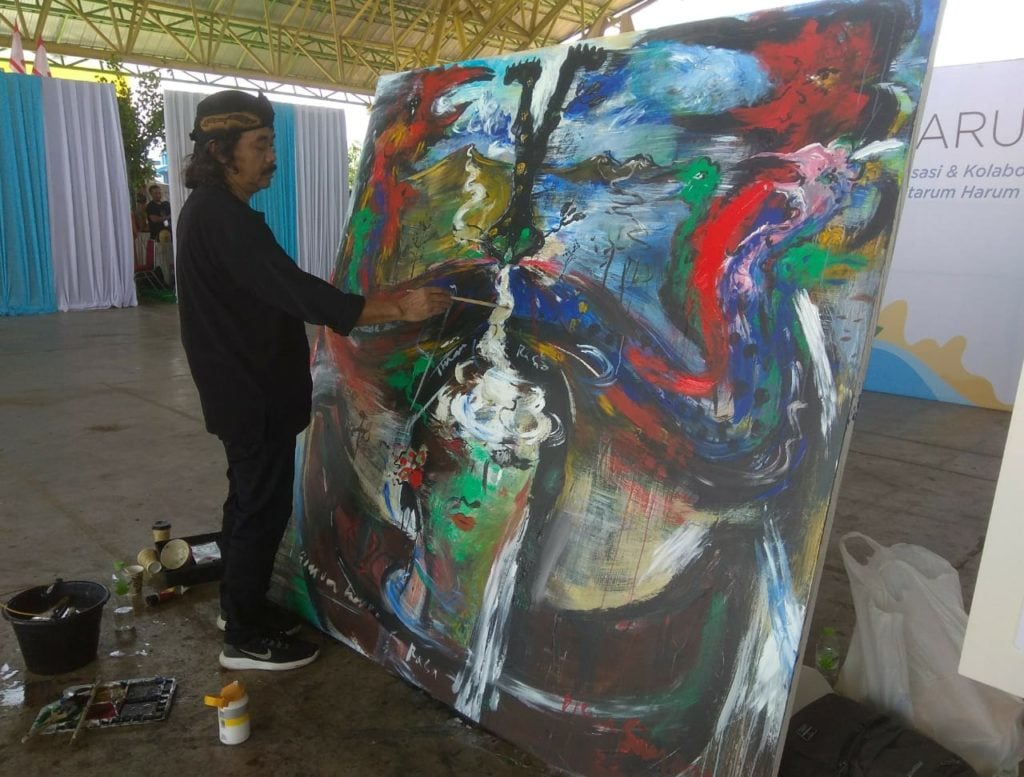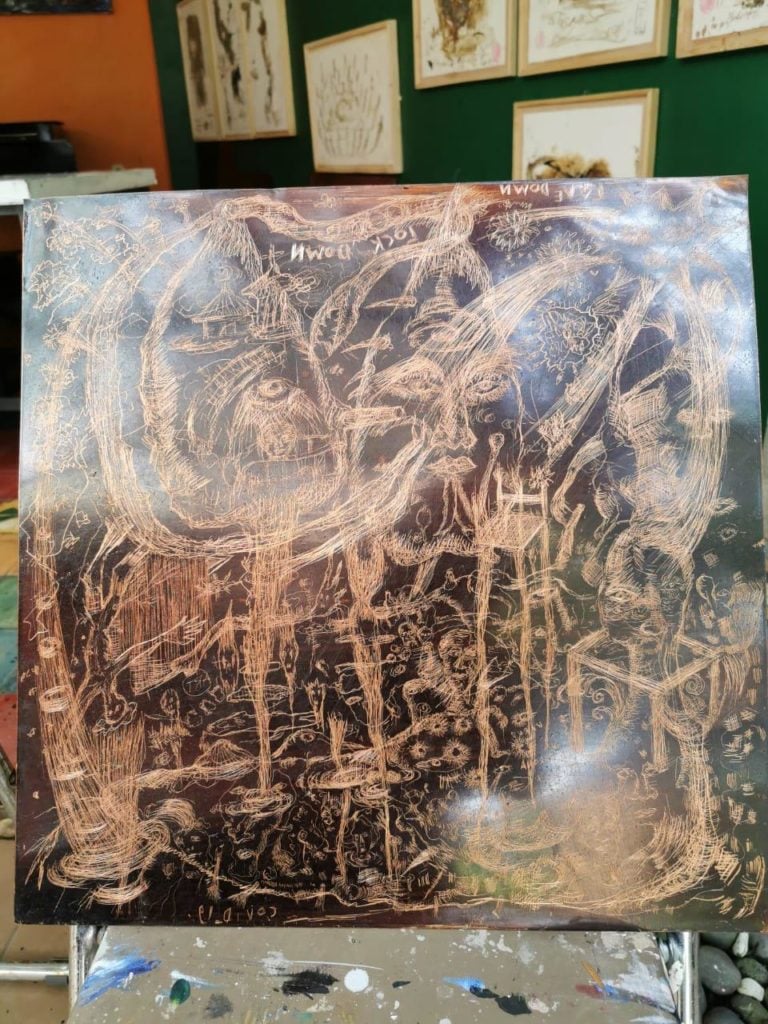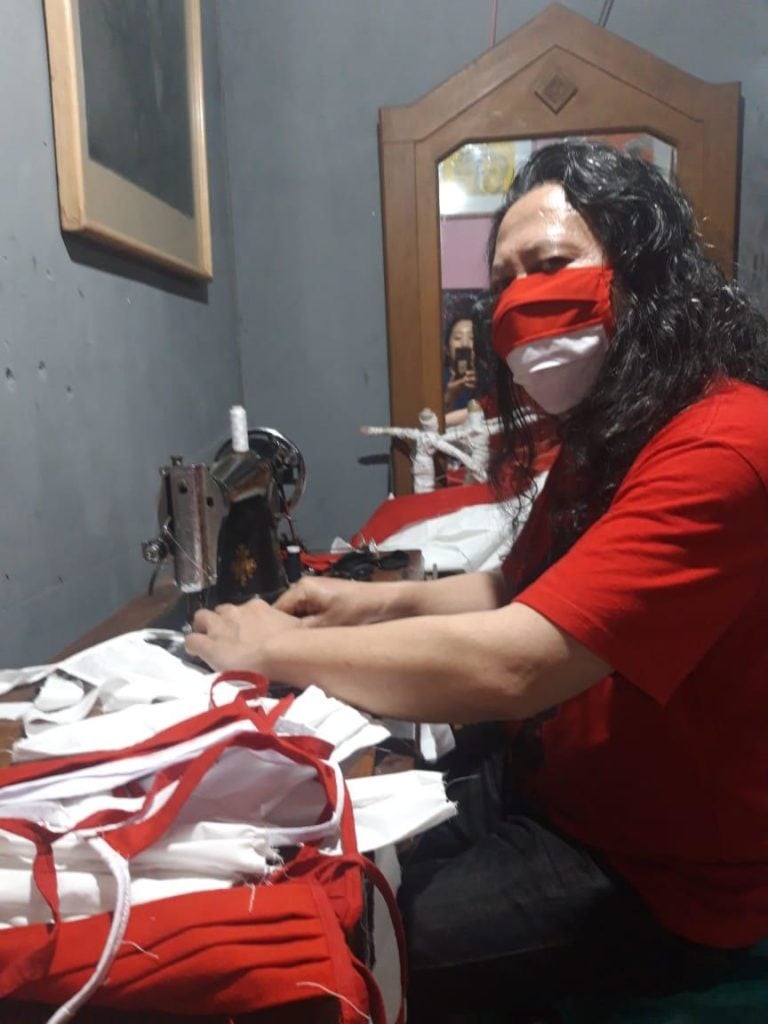Politics
In Isolation, Indonesia’s Artists Swing Between Gestures of Inspiration and Acts of Protest in the Absence of Government Aid
Tisna Sanjaya and Isa Perkasa show different ways that artists are coping.

Tisna Sanjaya and Isa Perkasa show different ways that artists are coping.

Aminudin Siregar

Here in Indonesia, artists have been among those affected amid the COVID-19 pandemic, and the government has not yet decided to provide any financial assistance. It seems that mapping and data collection of arts organizations and artists is still a significant obstacle for this country, so prosperous in cultural diversity.
Nevertheless, instead of waiting for the decision to be made, Indonesian contemporary artists continue to work in response to the pandemic and to spread inspiration. Some work on studio art at home. Others create works rooted in activities and practices that are shared through photos on Instagram or spread through WhatsApp groups.
Bandung-based artists Tisna Sanjaya falls into the first category. Sanjaya is a senior lecturer in the Visual Art Program at the Bandung Institute of Technology, where he teaches printmaking, and the campus is now closed. Ordinarily, he makes etchings, drawings, and paintings, although he is also known for his participatory art projects.
Recent photos from his Instagram show Sanjaya scratching a 70 by 85-centimeter copper plate. The lines are wild but in certain parts orderly. Strange forms emerge, resembling a terrible crowd of bacteria or viruses. The image of a tree with intricate branches appears as well.

Copper plate from Tisna Sanjaya. Image courtesy the artist.
These plates are still in the initial stages. In fact, Sanjaya wants specifically to highlight his process, since it’s part of what he loves about artmaking right now.
“Etching creates a deep contemplation,” explains the artist. “This process also requires patience. The pandemic leads me to reflections that reintegrate mind and soul. It [the art] is like a prayer for healing humanity.”
While Sanjaya wants to explore inner depths, another Bandung artist, Isa Perkasa, takes a different path. Since the 1990s, Perkasa has been known to the public for performance and installation art, often involving social protest. He has actively condemned oppression, the violence of the military apparatus and the state bureaucracy, socio-economic inequality, the plague of corruption, and much more.

Isa Perkasa sews a red and white mask at his home in Bandung. Image courtesy the artist.
Photos that appear now on Instagram show Perkasa sewing dozens of red-and-white masks—the colors of the Indonesian national flag. He produced these masks from his narrow house, behind a bus terminal in Bandung. He then has been distributing them to people who pass by his house: food vendors, students, mosque workers, drivers, and others.
One photo shows a crowd in which his red-and-white masks are seen on nearly half of the faces—a striking image. The function of the mask is no longer just to cover faces but also to highlight the current socio-political situation in Indonesia: a truly national emergency. In the context of Indonesian politics, the masks suggest being silenced as well as offering protection for those who wear them.
With shops closed due to the pandemic, Perkasa has recently run out of red and white fabric. Still, he didn’t want to give up.
Instead, Perkasa made use of the fabric from uniforms he has used in previous art projects such as his work Uniformed Memory, which commented on politics by using the material from the uniforms of various government security agencies as a canvas to paint on. Thus, his newer homemade masks now range from gray, brown, blue, to striped—colors typical of the Indonesian military. This symbolism is yet another way to gesture towards the larger situation in Indonesia at this moment.
Even though life is being quarantined and the government of Indonesia has not yet decided on any financial assistance scheme, there’s no reason not to create art. In the hands of those who are creative, it can continue to be a tool for strengthening humanity.